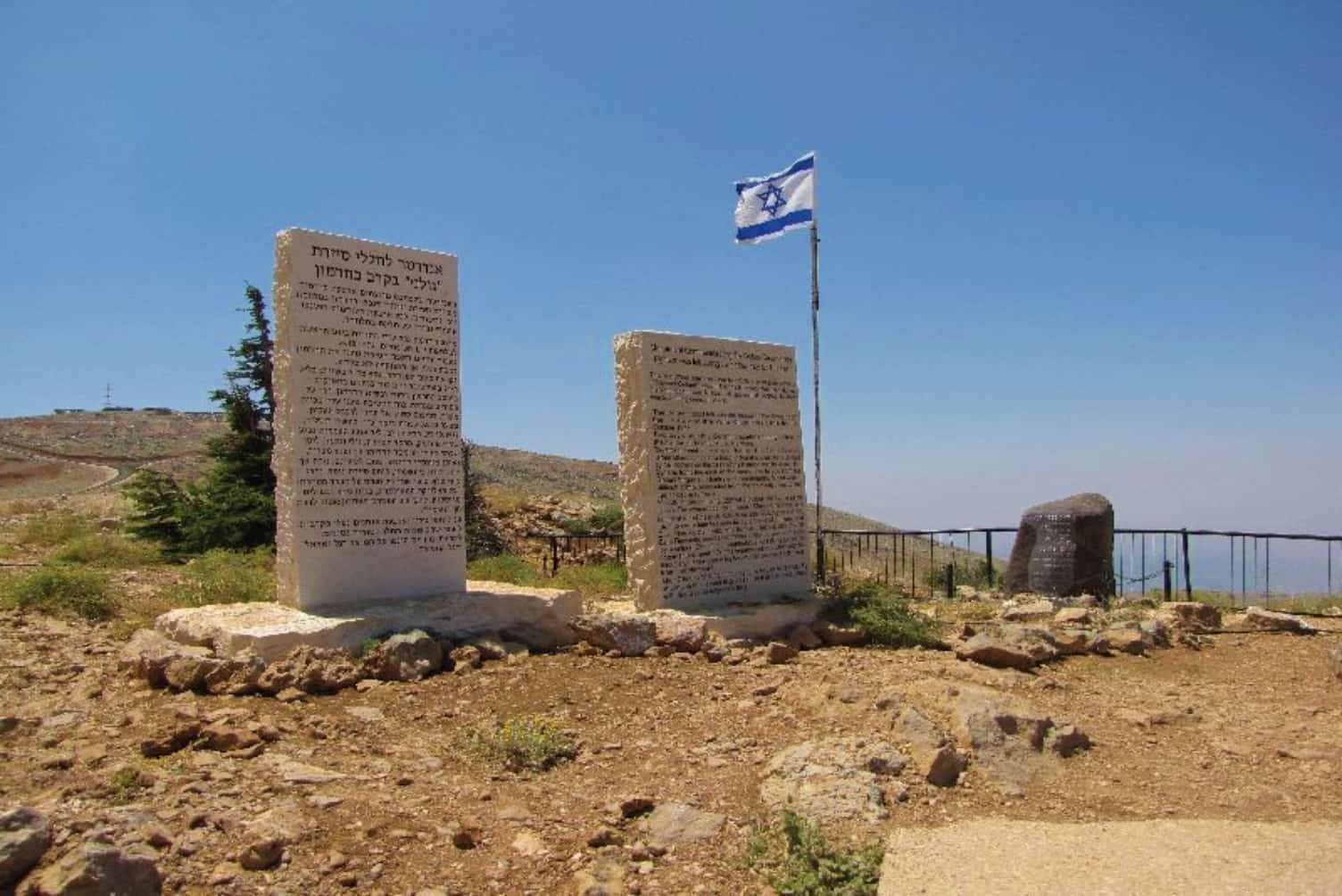Background: The IDF Hermon Base fell to the Syrians on the very first day of the Yom Kippur war, on October 6th, 1973. Two days later, the Golani Brigade attacked the Hermon, but was held back by the Syrians. Towards the end of the war, on the night of October 21st, 1973, the IDF attacked again; a helicopter-borne paratrooper force landed at the Syrian Hermon Base, and descended from there towards the IDF Hermon Base. From below, the Golani Brigade again attacked the Syrian Force, which fought with a great topographical advantage from dug-in positions above the attackers. After long hours of fighting with many casualties (almost all the Golani officers were either killed or wounded), the IDF Hermon Base was recaptured. The Golani Recon Unit showed great bravery in this battle, although it lost its commander and a number of soldiers at this very spot.
About the memorial: The memorial is up high on Mt. Hermon, with a view towards the area of the fierce fighting that took place during the battles. There are two blocks of stone that tell the story of the battle in both Hebrew and English. At the edge, near the bannister, is a round basalt rock; on the two sides of the stone, the names of the soldiers who fell here are engraved.
The big slabs of stone tell the story of the battle to visitors, and show the importance of the mission for which the soldiers fell. The basalt stone represents the pain and grief over the death of soldiers, and the deep connection between the fallen and the land.










